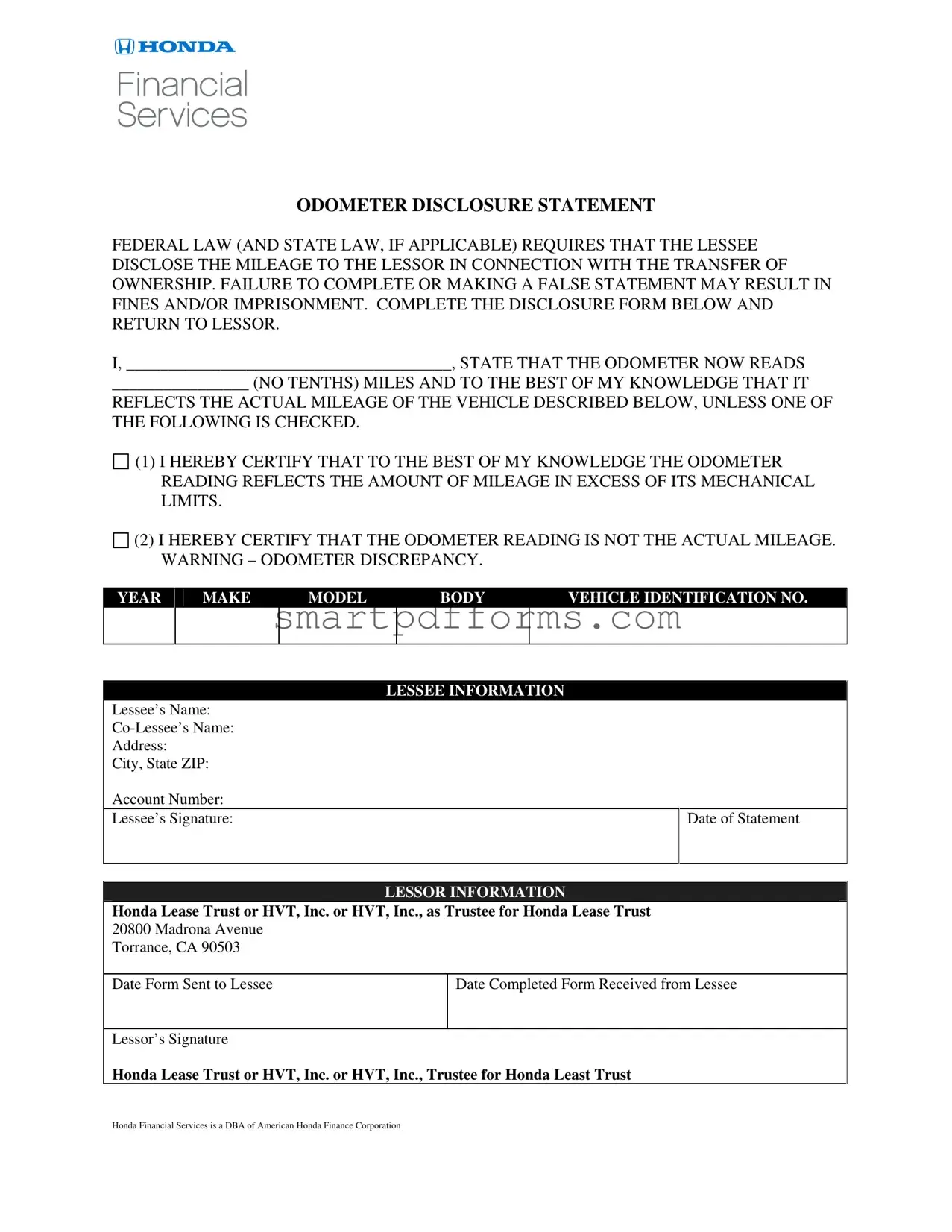Blank Honda Odometer Statement PDF Template
The Honda Odometer Statement form is a crucial document that serves to disclose the mileage of a vehicle in the event of a transfer of ownership, as mandated by federal and, where applicable, state law. This form requires the current lessee to accurately report the vehicle's odometer reading, ensuring that the mileage is correctly represented to the lessor, with strict penalties for any falsehoods or failure to complete the form. To simplify the process of transferring vehicle ownership and remain compliant with legal standards, ensure the odometer disclosure form is filled out accurately by clicking the button below.
Make This Document Now

